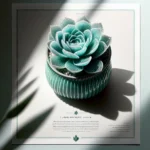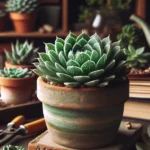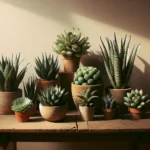Discover Haworthia Cooperi Var Truncata
Have you ever laid eyes on a plant so mesmerizing that it seems as though it was sculpted by the hands of Mother Nature herself? The Haworthia Cooperi Var Truncata is exactly that—a botanical jewel in the crown of succulents. This particular variety has garnered attention for its distinct appearance; where other plants are modest, the Haworthia Cooperi Var Truncata is audacious and unapologetically unique.
Originating from the Eastern Cape province of South Africa, it’s more than just a plant—it’s a living ornament. With its glass-like, translucent leaf windows, it twinkles like a cluster of emeralds under the sun’s caress. Each leaf is a testament to its beauty, inviting a closer look at the intricate details that culminate in a truncated tip, hence the name ‘truncata’.
Its allure doesn’t just end at its unique leaf window; the Haworthia Cooperi Var Truncata has won hearts with its low maintenance reputation. In a world that’s always rushing, this plant asks for little and, in return, gives much. Amidst the concrete jungle, it brings a slice of the African veld into the homes of urban dwellers, flourishing in conditions that many plants would shy away from.
Why do succulent enthusiasts treasure it? Perhaps it’s the way it transforms spaces with its unworldly charm, or how even a single ray of light can dance through its leaves, casting a pattern that is a pure delight to observe. Wander into the home of a plant lover, and you may spot the Haworthia Cooperi Var Truncata sitting proudly on a windowsill, basking in admiration and gentle sunlight.
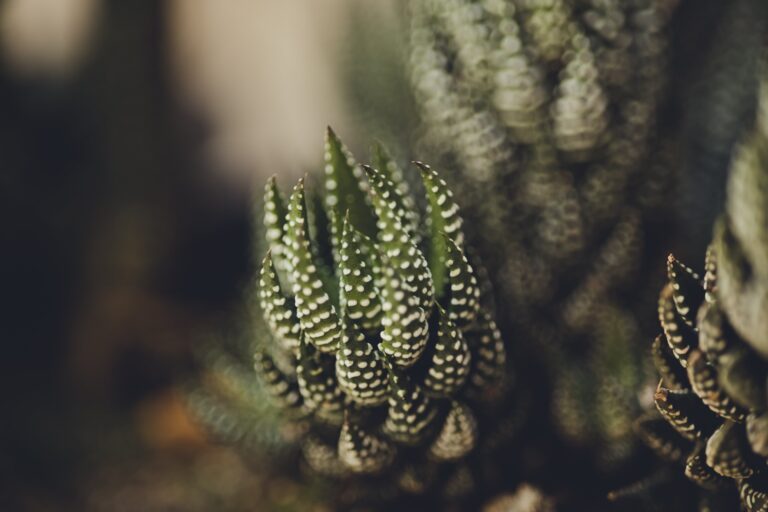
Picture yourself strolling through a sunny rock garden, the Haworthia Cooperi Var Truncata nestled among the stones, looking every bit the star of the show. It’s not a fussy character; a dash of love, a sprinkle of water, and a home that mimics its natural rocky habitat is all it needs to thrive. Discover more care tips to keep your succulents as happy as this stout-hearted specimen.
There are many reasons to celebrate this succulent, from its perfect suitability for container gardening to its role as a stress-reliever in home offices. It’s a silent but constant reminder of nature’s simple pleasures and a guardian against the monotony of daily life—a tiny yet mighty beacon of tranquility.
Ideal Growing Conditions for Thriving Plants
When it comes to cultivating a stunning window sill garden, the Haworthia Cooperi Var Truncata is undoubtedly a showstopper. But don’t let its dazzling appearance fool you; this gem of a succulent has specific growing needs to maintain its health and opulence. Let’s dig into the essential conditions to help your green little friend prosper.
First off, light is like the currency of growth for these plants, and they have a preference for the bright, filtered piggy banks found near a sunny window. Placing your Haworthia here allows it to soak up just the right amount of sunlight without the scorching heat that could leave its leaves looking sunburned, much like what might happen if you were reading by the pool without your trusty sunhat.
Temperature plays a no less crucial role; maintaining a consistent range between 60°F and 85°F (15°C to 29°C) mimics their natural habitat, keeping them comfortable. Remember that frigid winter draft or the sweltering heatwave that had you layering up or stripping down? Your succulent feels those extremes as well, so avoid placing it near single-glazed windows or next to heat sources during those times.
Now, let’s talk humidity—or rather, the lack thereof. These plants hail from arid regions, which means they’re more accustomed to a dry martini than a tropical smoothie. Indoor air typically suits them just fine, but if you happen to live in a more humid environment, consider using a dehumidifier or spacing out watering to give them the dry spell they crave.
Speaking of watering, here’s where things get a tad tricky. You want to water thoroughly, but then play the waiting game, allowing the soil to completely dry between drinks. Think of it like ordering your favorite coffee; you wouldn’t want the barista to refill your cup before you’ve savored the last drop, right? Proper watering not only quenches the plant’s thirst but also encourages strong root development and prevents root rot.
Take a moment to soak in the image of these thriving Haworthia plants. Isn’t it just like peering into a carefully curated crystal garden?
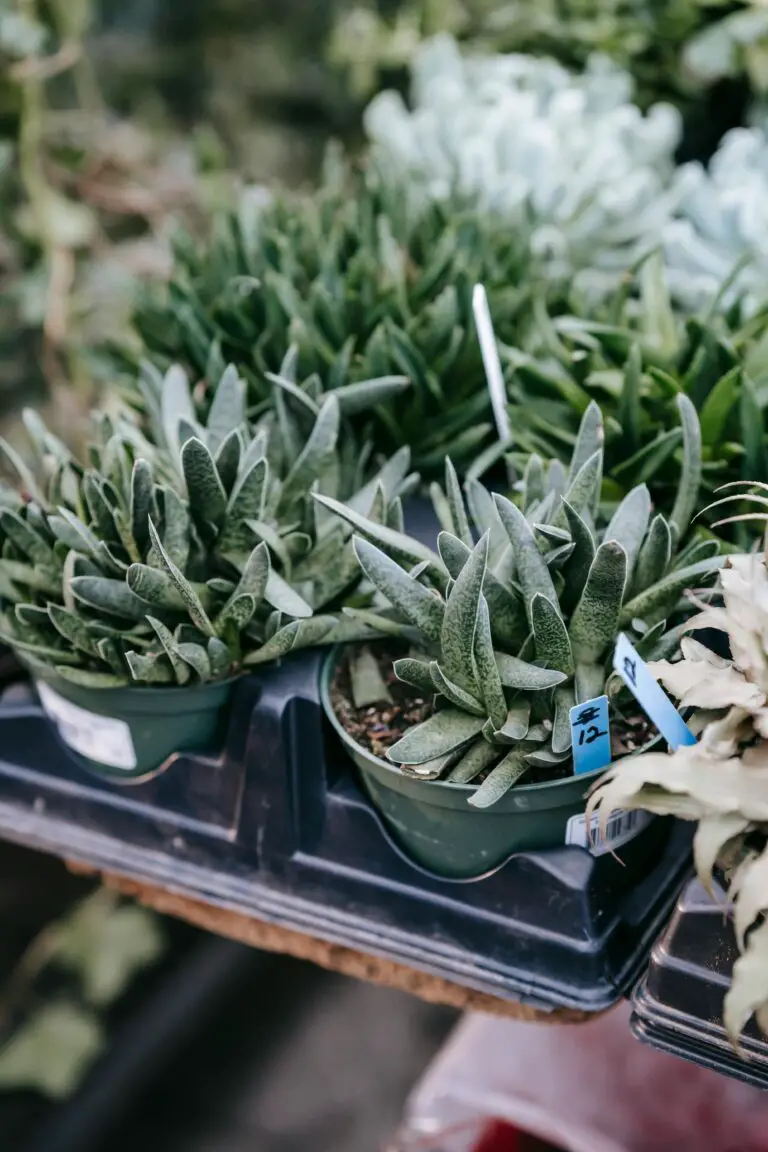
Adopting these care tips will ensure your Haworthia Cooperi Var Truncata doesn’t just survive, but truly thrives, becoming a conversation piece among your collection. So, keep these pointers in mind, and watch as your succulent becomes the living gem it’s meant to be.
Mastering the Art of Soil Mixture and Pot Selection
For those who cherish the Haworthia Cooperi Var Truncata as a jewel in their succulent collection, understanding the alchemy of the perfect soil mix paired with the ideal pot is vital. Much like a gourmet chef selects the best ingredients for a signature dish, you too must become selective with the components that will house and nourish your succulent treasure.
Imagine this scenario: you’ve just brought home a Haworthia Cooperi Var Truncata with plump, translucent leaves that glow like frosted glass in the morning light—only to watch it struggle in a substandard setting. It doesn’t have to be this way; a little knowledge goes a long way in creating a thriving, vibrant habitat.
The secret to a flourishing Haworthia lies in the art of balance. A soil mixture that tightly holds water is a recipe for root rot, while excessively sandy soil can dehydrate our plump-leafed friend. A perfect blend is well-draining yet moisture-retentive, such as a combination of potting soil, coarse sand, and perlite or pumice. This concoction will provide your Haworthia with the necessary hydration, all the while preventing waterlogged roots—a real-life balancing act of succulent care.

The journey doesn’t end with soil. The pot you choose is the stage upon which your Haworthia will perform. A common tale among succulent enthusiasts recounts the demise of a beautiful specimen all due to an ill-chosen vessel. To avoid such a fate, opt for a pot with ample drainage holes and just the right size—not too spacious as to drown your plant in soil, nor too snug to cramp its expanding roots. A clay or terracotta pot is often the go-to choice for its breathability and moisture wicking properties.
Remember, every choice you make for your Haworthia Cooperi Var Truncata dictates its destiny. By carefully curating the soil mix and pot, you’re not just setting up a home for your succulent—you’re crafting an environment where it can, quite literally, put down roots and flourish. Take this approach, and you’ll master the subtle nuances that turn a house for your plant into a home.
Irrigation Insights: Watering Your Haworthia Right
So, you’ve just brought home a Haworthia Cooperi Var Truncata, and it’s looking as charismatic as a treasure unearthed from a forgotten desert oasis. This little plant jewel is quite the conundrum, though, thriving on the brink between drought and drench. Stick with me, and you’ll be a watering wizard in no time!

Let’s imagine your succulent sitting in its pot – this isn’t just any plant; it’s the translucent Haworthia Cooperi Var Truncata, a succulent that demands your knack for balance. The key is to water it just right. What does ‘just right’ mean? Think of it like a well-tuned guitar, where every string (or in this case, drop) makes a difference. You’ll want to achieve a harmony that makes your plant sing with joy, not drown in sorrow.
Try to emulate the soft, whispering rain of its native South African habitat. Treat your Haworthia to a deep drink, letting the water run freely out of the pot’s drainage holes, mirroring a fleeting downpour. Then, and this is crucial, allow the soil to become completely dry before the next watering session. This cycle stimulates the roots to absorb moisture efficiently and promotes overall health. For more expert tips on the art of watering succulents, take a peek at this handy guide.
Not all setups are created equal, and sometimes, despite the best of intentions, we end up making soggy mistakes. Maybe you’ve set up saucers beneath your pots that unwittingly hold onto excess water. Consider this a no-fly zone for your Haworthia. Those saucers may turn into tiny lakes of doom, creating an overly wet environment leading to root rot. Instead, after watering, empty those saucers quicker than you’d shoo away flies at a picnic!
Are you curious about other ways to keep your succulent comrades thriving? Here’s an amazing resource on succulent care that’s like finding a hidden map to gardener’s gold.
Remember, the Haworthia Cooperi Var Truncata isn’t just a plant; it’s a lively character that can bring joy to any green space, as long as you listen to its subtle hints. Tune your watering frequency to the rhythm of the seasons, and your succulent will reward you by sparkling in the sun, just like the gem it truly is.
Propagation Pointers: Multiplying Your Haworthia Collection
Imagine this: a miniature garden of translucent jewels, each Haworthia Cooperi Var Truncata sparkling like a gem under the sun. Enthralling, isn’t it? Here’s how you can turn that vision into reality by propagating your own.
Offset Propagation: A Natural Wonder
Haworthia Cooperi Var Truncata, with its clump-forming nature, is a generous provider of offsets — those little pups that cluster around the mother plant. These babies are not just there to make your pot look fuller; they’re a sign of healthy growth and serve as the ideal starting point for propagation.
Offsets are ready to be separated when they’ve developed their own roots and seem crowded. The ideal time to do this is during the Haworthia’s growing season, giving them the best chance to thrive in their new home.
Remember, each offset carries the magical blueprint of its parent, ensuring the unique characteristics of the Haworthia Cooperi Var Truncata are passed on. By carefully removing these offsets, you encourage the parent plant’s growth while expanding your collection.
The Propagation Process: Simple Yet Rewarding
Propagation is like a botanical adventure, and luckily, it’s straightforward with Haworthia Cooperi Var Truncata. Here’s a cheat sheet to boost your confidence:
Step 1: Gently separate the offset from the main plant using disinfected tools. Aim for a clean cut without harming the tiny roots.
Step 2: Allow the offset to callous over for a day or two to prevent rot when planted.
Step 3: Plant the offset in a well-draining soil mix, specifically designed for succulents. Patience is key here, as the roots need time to establish before watering.
Step 4: After planting, place the pot in a warm, bright spot — think indirect sunlight. Haworthia thrives in similar conditions to their native South African habitat.
And there it is, your own little prodigy, beginning its journey to maturity.

In a few short weeks, your propagated offsets will begin showing signs of growth, and it won’t be long before they, too, are ready to contribute to your ever-expanding succulent family. Isn’t the cycle of nature fascinating?
Propagating Haworthia Cooperi Var Truncata is deeply rewarding — not just for the additional plants you’ll gain but also for the experience and connection to nature’s wonders. It’s a hands-on reminder that from the smallest of offsets can grow a stunning array of succulents.
Troubleshooting Common Issues in Haworthia Care
Gardening is a journey of trial and error, especially when nurturing delicate succulents like the Haworthia Cooperi Var Truncata. With thick, transparent leaves that shimmer like clusters of green gemstones, this succulent stands as a favorite among enthusiasts. But even this resilient plant can stumble upon issues. Fear not! We’re here to discuss some common troubles and how to polish your plant care routine to keep your Haworthia gleaming.

1. Whispers from the Windowsill: Is Your Haworthia Chatting with Chilly Drafts?
It’s tempting to show off your Haworthia by the window, but is it shivering in the cool draft? These succulents favor stable, warm conditions. If leaves begin to dull or wither, it might be signaling distress. Reposition your Haworthia away from drafty areas and into a cozy spot where it can bask in the gentle morning sunlight, avoiding the harsh afternoon rays.
2. A Thirsty Situation: Too Much Love Can Drown Your Gem
Compact rosettes teeming with dewy leaves are hallmarks of a healthy Haworthia, yet overwatering is a common misstep. Root rot, a silent killer, often creeps in when excessive moisture lingers. Be sure to allow the soil to dry out completely between watering sessions. When the dirt crumbles like a piece of forgotten pottery, it’s time to quench your Haworthia’s thirst.
3. Feeding Frenzy: The Delicate Dance of Nutrients
Every living gem requires sustenance to sparkle. Nevertheless, overfeeding can cause more harm than good, resulting in leaf burn or stunted growth. A gentle, balanced fertilizer suited for cacti and succulents during the growing season is all your Haworthia needs. Consider feeding your succulent friend sparingly; a light meal is often plenty to sustain its luscious glow.
By tuning into your Haworthia’s subtle cues, reshaping care routines, and embracing the art of staying hands-off at times, you pave the way for a thriving, radiant plant. Approach these common issues not as hindrances but as opportunities to deepen your green-thumbed expertise and relationship with your Haworthia Cooperi Var Truncata.
Showcasing Your Haworthia: Display and Decor Tips
Imagine this: a gem-like Haworthia Cooperi Var Truncata, with its transparent, fleshy leaves, nestled within a chic terrarium on a reclaimed wood coffee table. The contrast is just striking – rustic meets delicate, timeless beauty. It’s not just a plant; it’s a conversation starter that brings a corner of your living room to life. But why stop there? Let’s explore the endless possibilities that this succulent gem offers to uplift your home’s aesthetic.
Consider the elegance of minimalism. A sleek, white mantelpiece, arrayed with varying heights of cylinder glass vases, each cradling a small Haworthia Cooperi Var Truncata. The light filters through the leaves, creating a dance of shadows and light that visually enlarges the space. It is the very essence of modern chic – understated yet breathtakingly sophisticated. The visual harmony of these small but mesmerizing plants can truly anchor a minimalist decor theme.

Now let’s talk synergy between flora and furniture. A vintage oak bookcase, not just for literature but for showcasing treasured items, including your beloved collection of Haworthia Cooperi Var Truncata. Each succulent sits within unique artisanal pots, adding a personal touch that reflects your taste. You’ve transformed a simple shelving unit into a dynamic display of natural artistry.
Ever thought of a botanical wall? Picture a series of floating shelves arranged asymmetrically on a muted wall color. Each shelf hosts a singular Haworthia Cooperi Var Truncata, positioned deliberately to create an organic, living artwork. Guests can’t help but pause to admire how these succulents enliven the vertical space and invite nature inside in a fresh, unexpected way.
While integrating this succulent into your home, remember that Haworthia Cooperi Var Truncata thrives on attention to detail. Pair it with complementary elements like pebble trays or moss balls that echo its color palette, and choose containers that resonate with the character of your space. Whether your style is bohemian, modern, or anything in between, this succulent allows for a personalized touch that’s truly your own.
Embrace the power of these natural jewels. With some creativity and an eye for design, Haworthia Cooperi Var Truncata doesn’t just occupy space – it transforms it, adding layers of texture and intrigue to your home. It’s more than decor; it’s an experience, a little slice of nature’s wonder brought into your everyday life. So go ahead, let this succulent star shine and watch as it turns each nook into a storyboard of your own style and elegance.
Sustainable Practices for Eco-Friendly Succulent Care
Oh, the shimmering, pellucid leaves of the Haworthia Cooperi Var Truncata do indeed make it a jewel in the crown of succulents. But as we admire its translucence and ease of care, let’s not forget the environment where this gem originated. We can actually foster our green thumb while giving back to Mother Earth by adopting sustainable care practices for our prized plant. It’s about time we roll up our sleeves and dig into eco-friendly solutions that keep both our succulents and the planet thriving!
Imagine this: Instead of reaching for that brand new plastic pot, you repurpose an old teacup or a quaint vintage tin for your Haworthia Cooperi Var Truncata. Not only does this cut down on waste, but it also adds a personal touch to your décor. Who knew recycling could look so chic?
Composting and Organic Soil Amendments
Think green, think growth! Crafting a nutrient-rich home for your succulents doesn’t require harsh chemicals. Dabble in the dark arts of composting and watch kitchen scraps transform into black gold for your plants. Not only does this reduce landfill waste, but it also fosters a mini-ecosystem right in your pot!
Conserve Water with Smart Irrigation
Succulents are desert darlings, renowned for their low water needs. By using collected rainwater or repurposing water from other household tasks, you’re channeling your inner eco-warrior. Catching rainwater can be as simple as placing a bucket under a downspout. There, you’re storing up Neptune’s bounty for a non-rainy day and your plants will revel in this natural hydration, free from the tap!
Now, to enhance our succulent savoir-faire, let’s press “play” on some visual learning. The following video showcases sustainable succulent care that embodies the spirit of eco-friendliness while ensuring your lovelies flourish:
Let’s be real. Cultivating a Haworthia Cooperi Var Truncata garden that’s kind to the planet is not just a trend; it’s a commitment to future generations. By adopting these sustainable practices, you’re not just caring for a succulent; you’re part of a global movement. So, go on, give your succulents—and the environment—the TLC they deserve!
Frequently Asked Questions
Got burning questions about Haworthia Cooperi Var Truncata? You’re not alone! These little succulent treasures spark curiosity with their glass-like leaves and robust nature. Let’s dive into some real-life enigmas plant lovers just like you are itching to unravel!
How Much Light Does Haworthia Cooperi Var Truncata Need?
Imagine the natural habitat of Haworthia Cooperi Var Truncata—a place kissed by the soft morning sun and sheltered from the harsh afternoon rays. Mimic this at home with bright, indirect light. Too much sun, and your succulent might go from gem to gemstone, showing signs of sunburn.
Is It True They Can Survive Without Water for Weeks?
Here’s a toast to the desert survivalist in your living room! These succulents have mastered the art of water storage. Kind of like a camel, but in plant form. While they can go without water for a while, striking a balance is key. Water them thoroughly when the soil is completely dry—think of it as a miniature oasis for your thirsty friend.
Can I Propagate Haworthia Cooperi Var Truncata Easily at Home?
Propagation could be your next party trick! With a few simple steps, you can multiply your collection. Simply separate offshoots or leaf cuttings, and with a little patience, you’ll have new plants sprouting. It’s like a plant maternity ward right on your windowsill!
Do They Have Any Common Pests or Problems?
Even the glittering Haworthia Cooperi Var Truncata isn’t immune to the occasional pest. Mealybugs and spider mites might invite themselves to the party unannounced. But don’t worry, a little insecticidal soap or neem oil can send those party crashers packing.
Will My Haworthia Cooperi Flower?
Yes, they can bloom and when they do, it’s like a surprise performance in your succulent concert. Their flowers aren’t the main act—but when the delicate blossoms appear, it’s a clear sign your green amigo is happy and well-cared for.
Are They Safe for Pets?
Your furry friends can breathe easy because this succulent is non-toxic to cats and dogs. Still, it’s best to keep it out of reach, unless you fancy a chewed-up plant—pets can be unpredictable critics of home décor.

